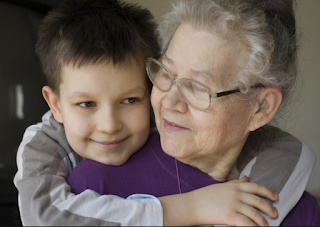Sexual orientation – in the genes?

Is homosexuality a lifestyle choice or an innate biological disposition? The idea that it is a choice is certainly widespread – a part of several mainstream religious doctrines and political ideologies – and is used to condone significant discrimination against homosexuals and the criminalization of homosexual behaviour. But what does the science say?
The broad conclusions are that sexual orientation is an innate disposition – no different from whether you are left or right-handed – that it is affected by genetic influences and that it reflects differences in brain structure and function. I will consider the evidence of genetic effects on sexual orientation here, including some recent additions – a later blog will look at the neurobiological findings.
A number of family and twin studies of the heritability of sexual orientation, starting in the 1950’s, found significant genetic influences: the statistical likelihood of an individual being homosexual increased somewhat if they had a homosexual dizygotic (fraternal) twin and dramatically if they had a homosexual monozygotic (identical) twin. However, these studies have generally suffered from some methodological limitations, including small sample sizes, the possibility of ascertainment bias due to the methods of recruitment of participants and an assumption that homosexuality in males and females is likely caused by the same mechanisms.
This assumption reflects a common idea that heterosexuality represents the same default state in both males and females – that it is the “normal”, baseline condition, one that requires no active processes. In fact, there is not a single rule: “be attracted to members of the opposite sex” – there are two rules: either be attracted to males or be attracted to females. These “rules” are embodied in anatomical and physiological differences in neural circuitry controlling sexual desire and behaviour, which differ between heterosexual males and females. (See: Wired for Sex for more on these processes in male brains). Understanding that both these behavioural rules require active and possibly distinct neurodevelopmental processes to establish makes it much easier to appreciate how alterations to those processes can lead to exceptions to how those rules are expressed.
Three recent twin studies have largely overcome previous methodological issues, demonstrate clear genetic influences on sexual orientation and argue strongly that homosexuality in males and females is due to distinct mechanisms. These studies all used large, population-based samples – that is, the subjects were not recruited to the study based on sexual orientation – in Sweden, Finland and Australia. In each study, rates of homosexuality were compared between pairs of monozygotic or dizygotic (same-sex or opposite-sex) twins. Each study had several thousand participants and several hundred twin pairs, making them well-powered statistically to detect genetic or environmental effects on sexual orientation.
These studies differed significantly in how they assessed sexual orientation, however, which may be reflected in their results. Zietsch and colleagues in the Australian study used a questionnaire to assess sexual attraction on a seven-point “Kinsey” scale, from exclusive heterosexual attraction to some degree of homosexual attraction. In response to this question, 11% of men and 13% of women, were rated as non-heterosexual. Alanko and colleagues in the Finnish study used a composite measure of same-sex attraction and same-sex sexual contact. In this survey, 6.1% of men and 6.6% of women reported a homosexual orientation. Interestingly, the quantitative measures used demonstrated a much more bimodal distribution in males than in females, mirroring previous observations that bisexuality is much more common in females than in males (males tending to be either strongly heterosexual or strongly homosexual). Langstrom and colleagues used a direct question about lifetime number of same-sex sexual partners, with 5.6% of men and 7.8% of women reporting at least one – among those reporting at least one, men reported significantly more same-sex partners.
Estimates of genetic influences were high across all three studies. The Australian study found heritability of 48% for sexual orientation across males and females together. The Finnish study estimated genetic influences on sexual orientation of 45% and 50% for men and women, respectively. Neither study found any evidence of an effect of shared environment. The Swedish study gave somewhat different results – the heritability for male heterosexuality was quite high, 39%, with no effect of a shared environment. However, the estimated heritability for female heterosexuality was lower in this study, around 18-19%, and a significant contribution from the shared environment was found for females in this study (16-17%). These differences could reflect sampling effects, population genetic or cultural differences, or the differences in how sexual orientation was assessed (based on actual same-sex sexual behaviour in the Swedish study). It is important to note that a shared family environment for dizygotic twins includes a shared uterine environment, which may impact on neural development.
Importantly, both the Australian and the Finnish studies found zero correlation of homosexuality across opposite-sex dizygotic twin pairs, while same-sex dizygotic twin pairs showed substantial correlations. So, if a male has a fraternal twin brother who is homosexual, there is a significantly increased likelihood that he will also be. This is not the case if his twin sister is homosexual (and vice versa).
The major conclusion from these studies corroborates previous findings: sexual orientation is strongly influenced by genetics. Whatever the underlying biological processes, they are likely different for males and females, as reflected in differences in reports of same-sex attraction and expression of sexual behaviour, with males showing a more bimodal distribution. The potential neurobiological processes involved will be the subject of a later post.
Those are the scientific conclusions. My personal interpretation is that dispositional homosexuality is no more a choice than left or right-handedness. Most heterosexuals certainly can not point to the time when they “chose” to be straight no more than someone can say they chose to be right-handed. Natural left-handers can certainly learn to write right-handed but that will not change the inherent disposition, nor is there any good reason to try and change it. At the other extreme, these findings do not suggest that homosexuality is a biological “disorder”. Conditions are only defined as a disorder if they have a negative impact on someone’s life – by this definition, homosexuality is only a disorder if society’s reaction makes it one.
Långström N, Rahman Q, Carlström E, & Lichtenstein P (2010). Genetic and environmental effects on same-sex sexual behavior: a population study of twins in Sweden. Archives of sexual behavior, 39 (1), 75-80 PMID: 18536986
Alanko K, Santtila P, Harlaar N, Witting K, Varjonen M, Jern P, Johansson A, von der Pahlen B, & Sandnabba NK (2010). Common genetic effects of gender atypical behavior in childhood and sexual orientation in adulthood: a study of Finnish twins. Archives of sexual behavior, 39 (1), 81-92 PMID: 19172387
Zietsch BP, Verweij KJ, Bailey JM, Wright MJ, & Martin NG (2009). Sexual Orientation and Psychiatric Vulnerability: A Twin Study of Neuroticism and Psychoticism. Archives of sexual behavior PMID: 19588238


I do think we have more of a say in our sexual behavior than these studies suggest, but I don't have much tolerance for anyone willing to place moral judgments on folks for homosexuality. The degree to which it might or might be a choice in this case or that case would never justify the types of discrimination all lesbians and gays live with.
ReplyDeleteIt’s really a great post, Thank you for this brilliant knowledge, I really appreciate it,
ReplyDeletelaw dissertation ideas